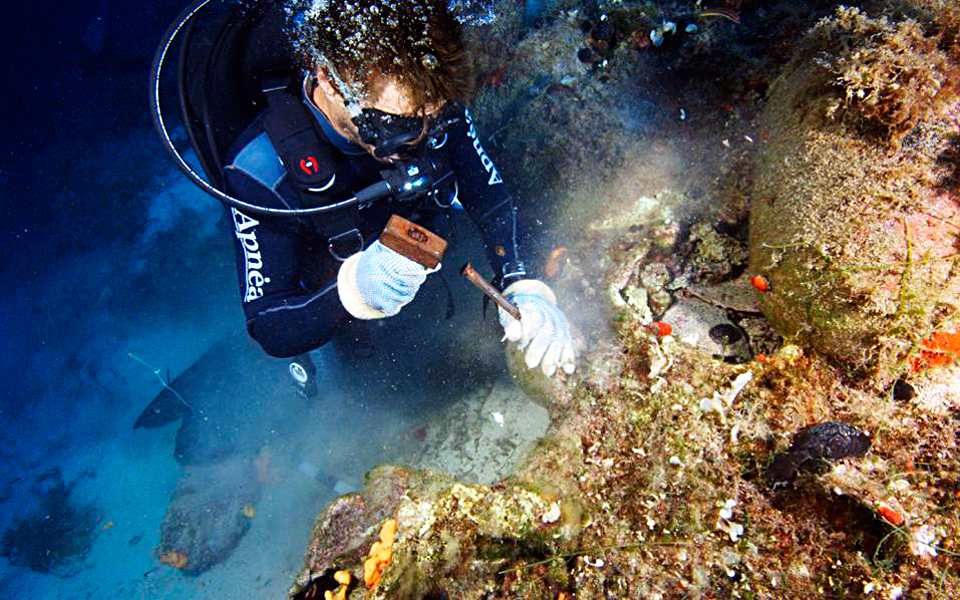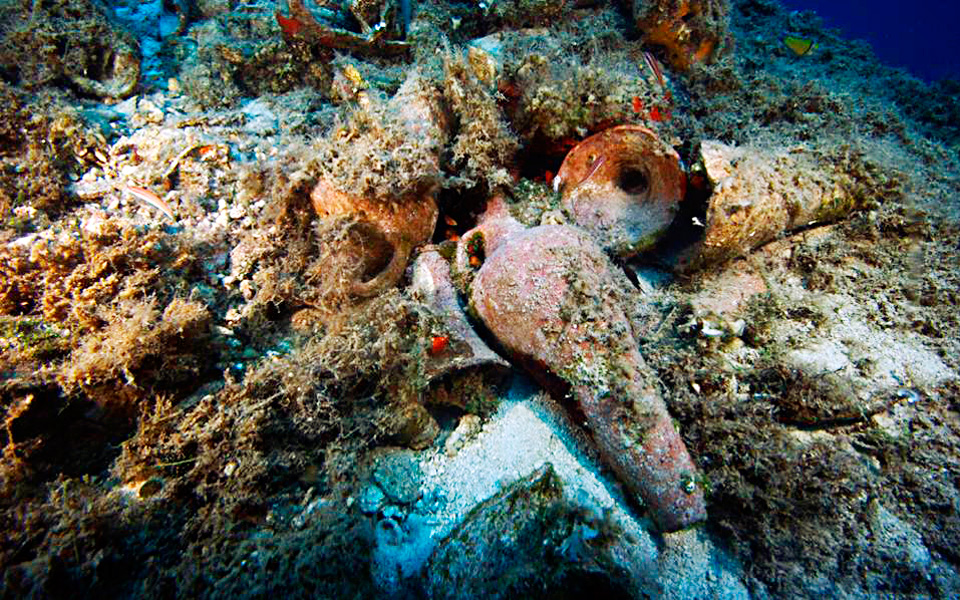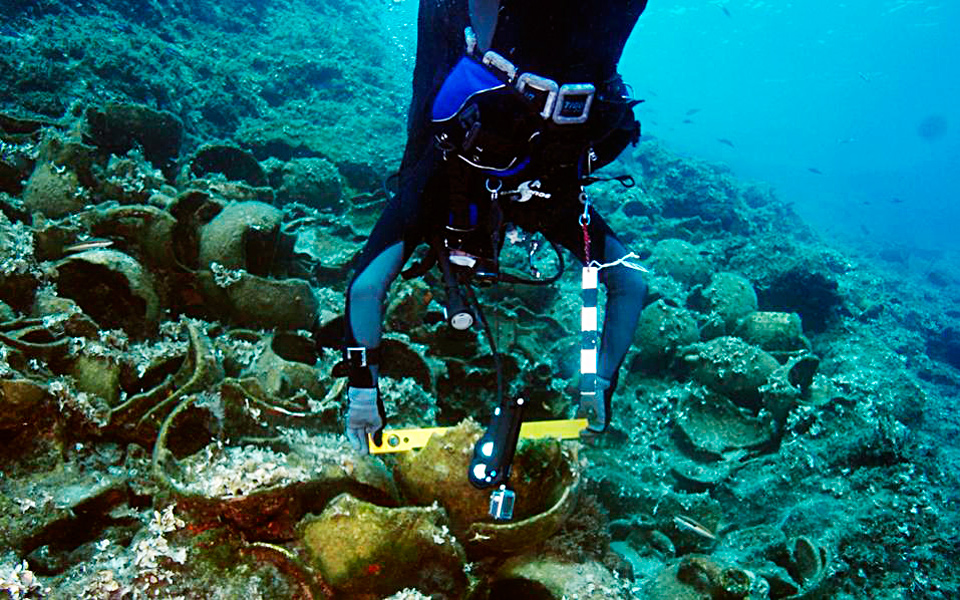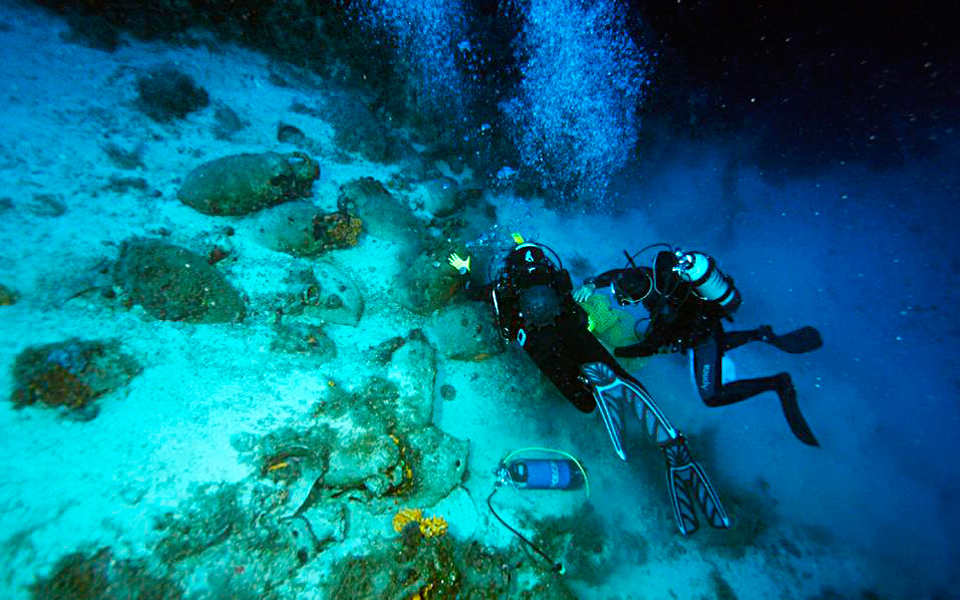Ancient, medieval and post-Byzantine shipwrecks were recently discovered by divers of Greece’s Underwater Antiquities Department in waters around the small islands of the Fourni complex which lies between Ikaria, Samos and Patmos. A team of eight Greek deep-sea divers, with technical support from US colleagues of the RPM Nautical Foundation, found 22 shipwrecks during a brief 15-day survey between mid-September and early October 2015. Interestingly, the endeavor covered less than four percent of the total coastline surrounding the Fourni complex – which has a total population of around 1,459 (2011 census) – prompting the archaeologist divers to believe there may be much more waiting to be discovered in the wider area.
Although the news excited the US archaeological community and generated considerable mainstream media coverage – both press and TV – Greece’s Culture Ministry, quite bizarrely, has yet to make an official announcement on the discoveries, despite the disproportionately high number of finds in such a small area.

The team of divers was led by George Koutsouflakis, an experienced member of the Underwater Antiquities Department, who has in the past conducted a major survey of the South Euboean Gulf, slightly northeast of the greater Athens area. “We, too, were impressed by the fruits of our efforts in such a short period of time. An equivalent survey in the South Euboean Gulf had led to the discovery of 26 shipwrecks over a total of eight missions, and now we’ve discovered almost that many in just two weeks,” Koutsouflakis notes.
His comment prompts the obvious question as to why archaeologists chose to focus their efforts on the Fourni island complex. “There were two reasons. Firstly, the archipelago’s geographical position and form, featuring many leeward ports, made it a very popular route for voyages in ancient times, especially for ships sailing in the Aegean, to and from Asia Minor and its major cities,” Koutsouflakis explains. “In addition, the islands are located in a key position along the north-south axis from Rhodes to Mytilene and from the Levant to the Black Sea. Also, because I happen to hail from Ikaria, I knew that ancient boats were hidden in the deep sea. So, before beginning the underwater survey, we accumulated a wealth of information from fishermen and other locals who know the waters very well,” he adds.
“We, too, were impressed by the fruits of our efforts in such a short period of time,” Koutsouflakis notes.

The 22 shipwrecks discovered by the team of divers span a period of history from antiquity to just before the War of Greek Independence which began in 1821, with the majority dating to between the 3rd and 7th centuries AD, an era during which maritime trade in the Fourni area flourished.
The impressive finds include a shipwreck carrying Samian amphoras which dates to the mid-6th century BC, a post-Classical era shipwreck with a cargo of Chian amphoras and vases, three shipwrecks with amphoras from areas of the Black Sea which date to between the 3rd and 6th centuries BC, as well as a wreck with amphoras from Syria-Palestine, dating to the 3rd or 4th century BC. According to Koutsouflakis, who believes the survey will continue for years to come, “The great diversity of cargo and the discovery of so many ships carrying non-Aegean loads seems to indicate that Fourni played a pivotal role in antiquity, far beyond the immediate region, as a maritime hub for commercial routes amid a wider trading network.”
“The great diversity of cargo and the discovery of so many ships carrying non-Aegean loads seems to indicate that Fourni played a pivotal role in antiquity. ”

THE LOCAL COMMUNITY To maximize the underwater survey’s chances of success, the local community – especially fishermen, divers, and sponge divers – were informed of the initiative in advance and asked to provide any information they might have about underwater antiquities in the area. The mayor of Fourni, Yiannis Marousis, also offered significant support. The RPM Nautical Foundation team was headed by archaeologists Jeffrey Royal and Peter Campbell, while the survey was made possible courtesy of the generous sponsorship of the Honor Frost Foundation, an early pioneer in underwater archaeology.











